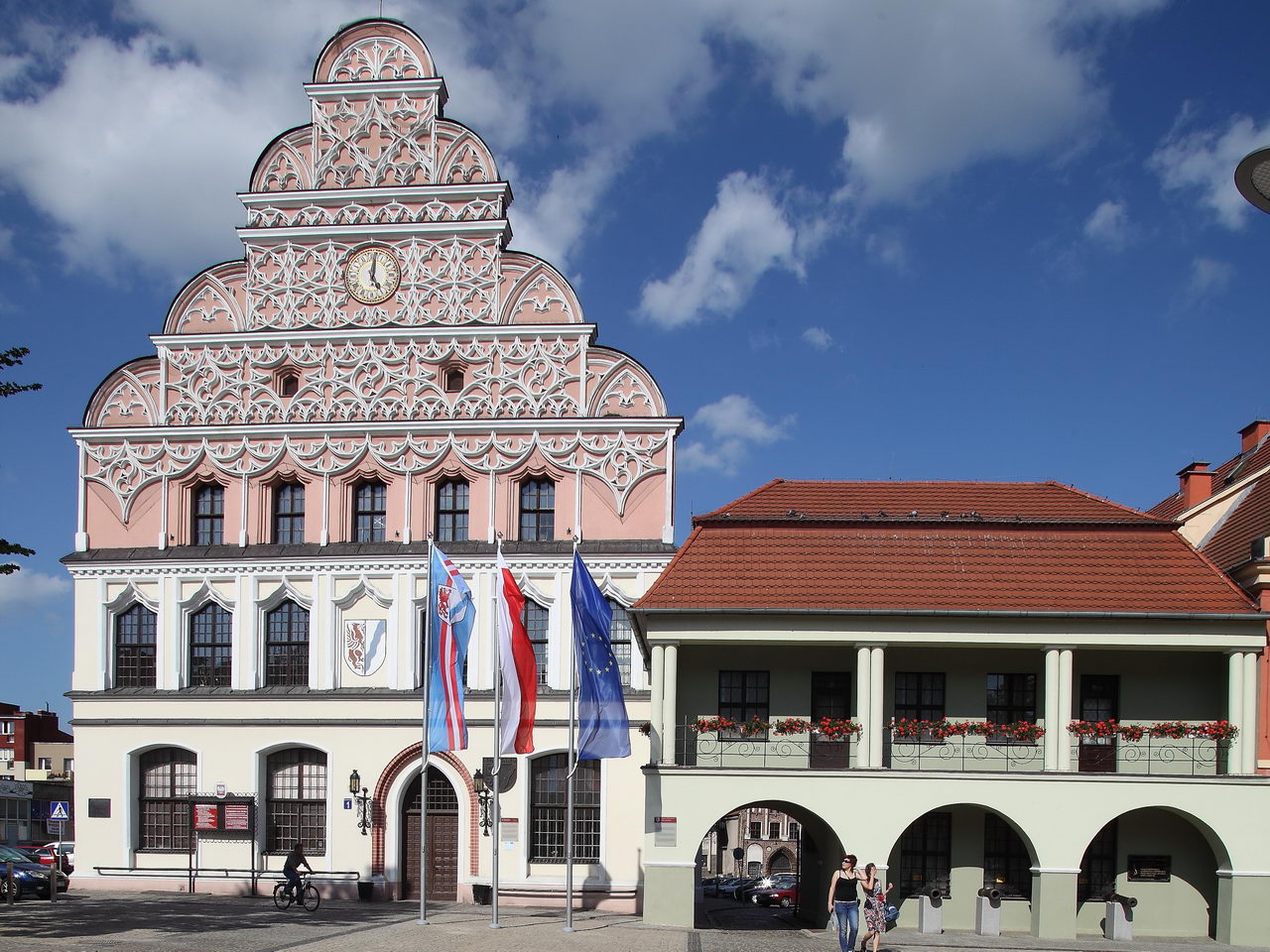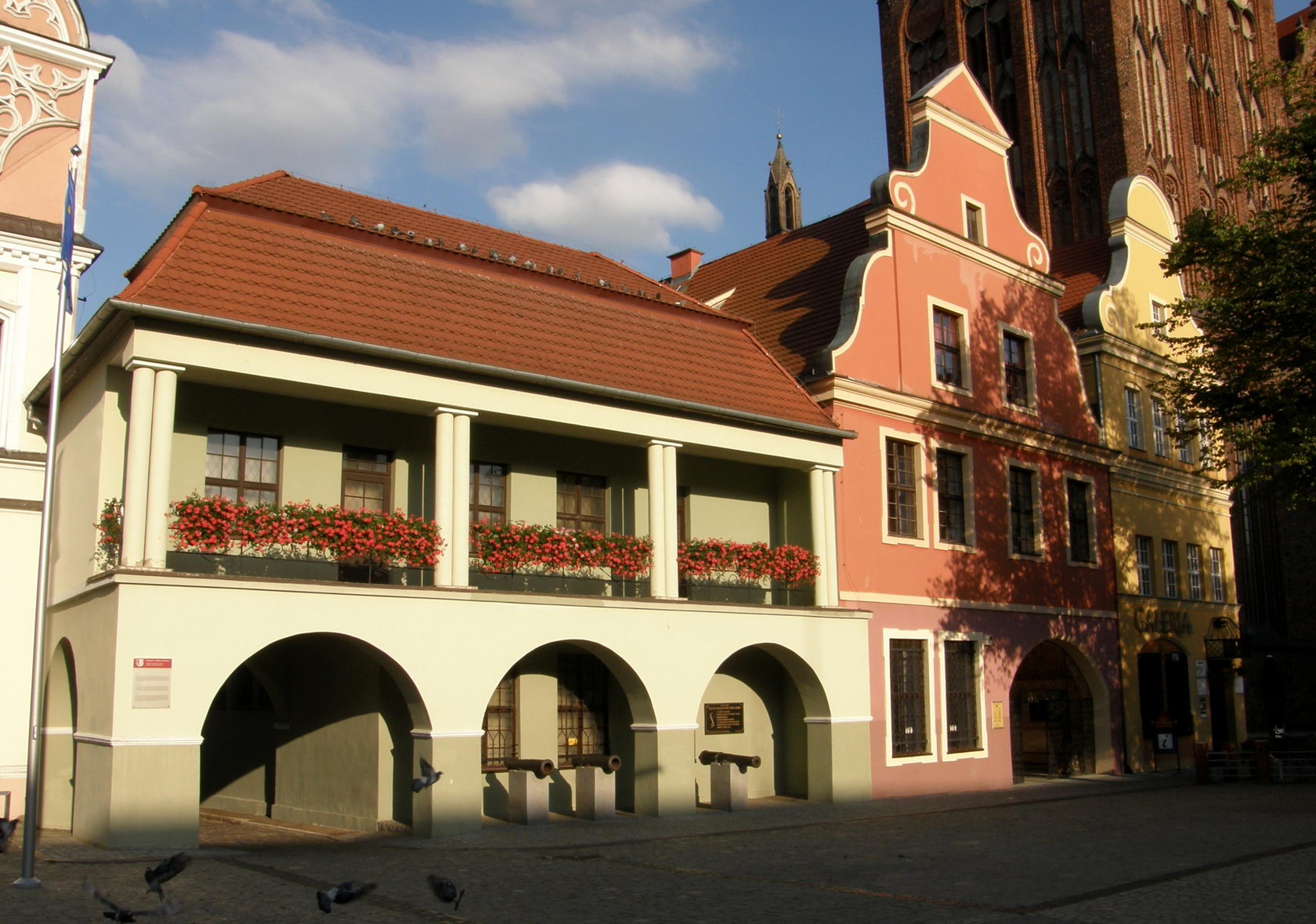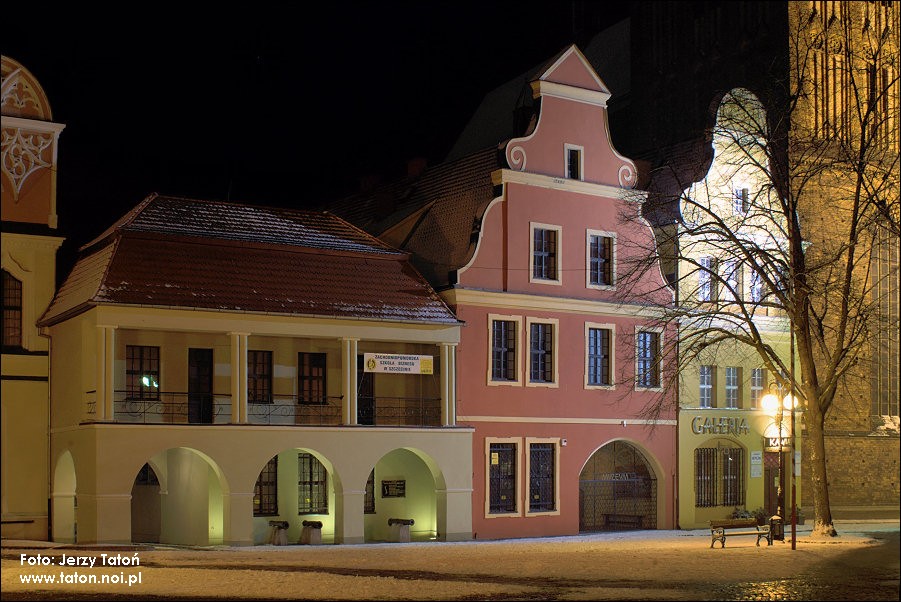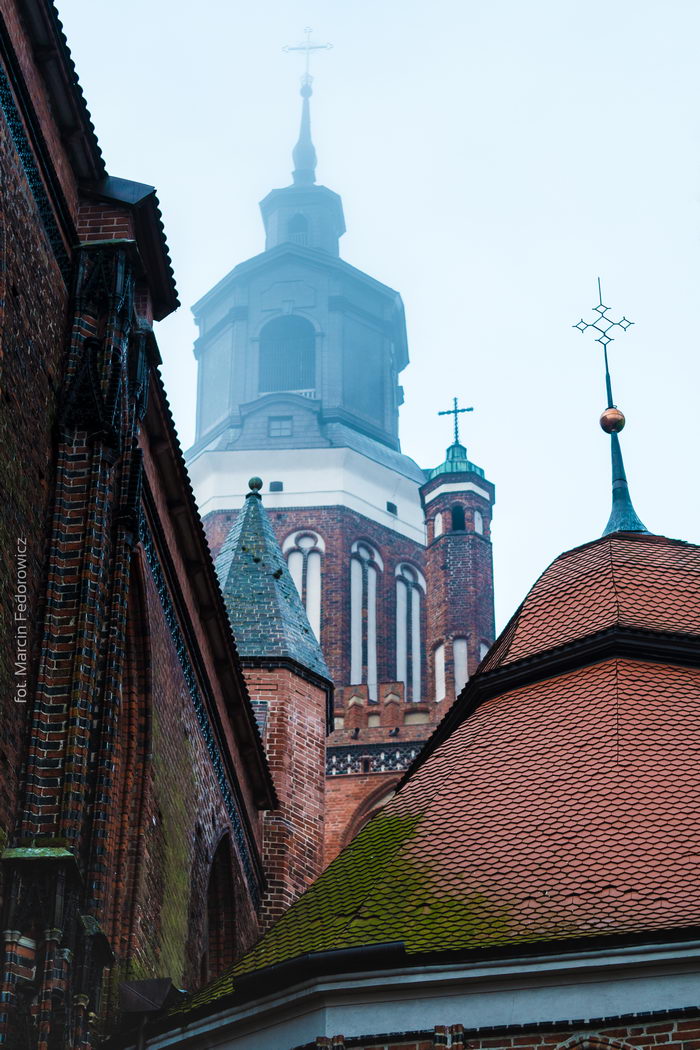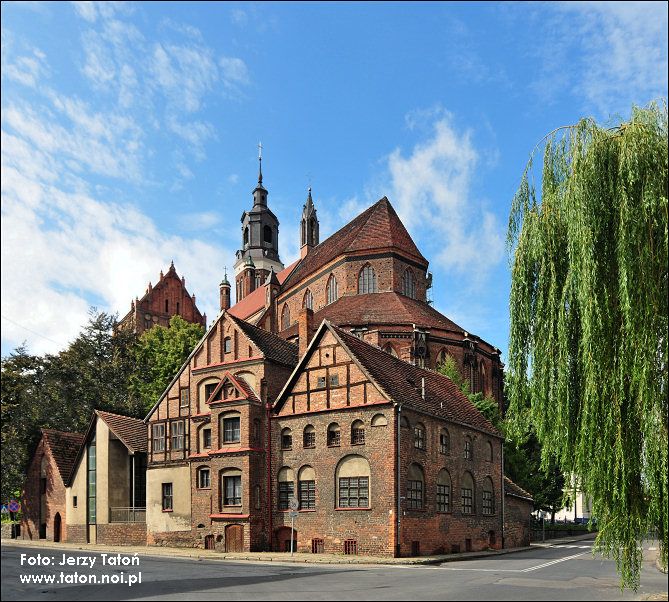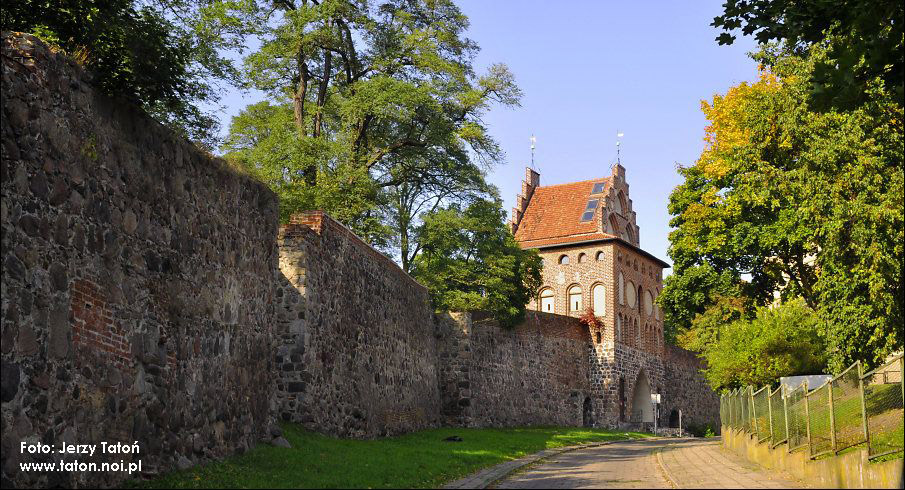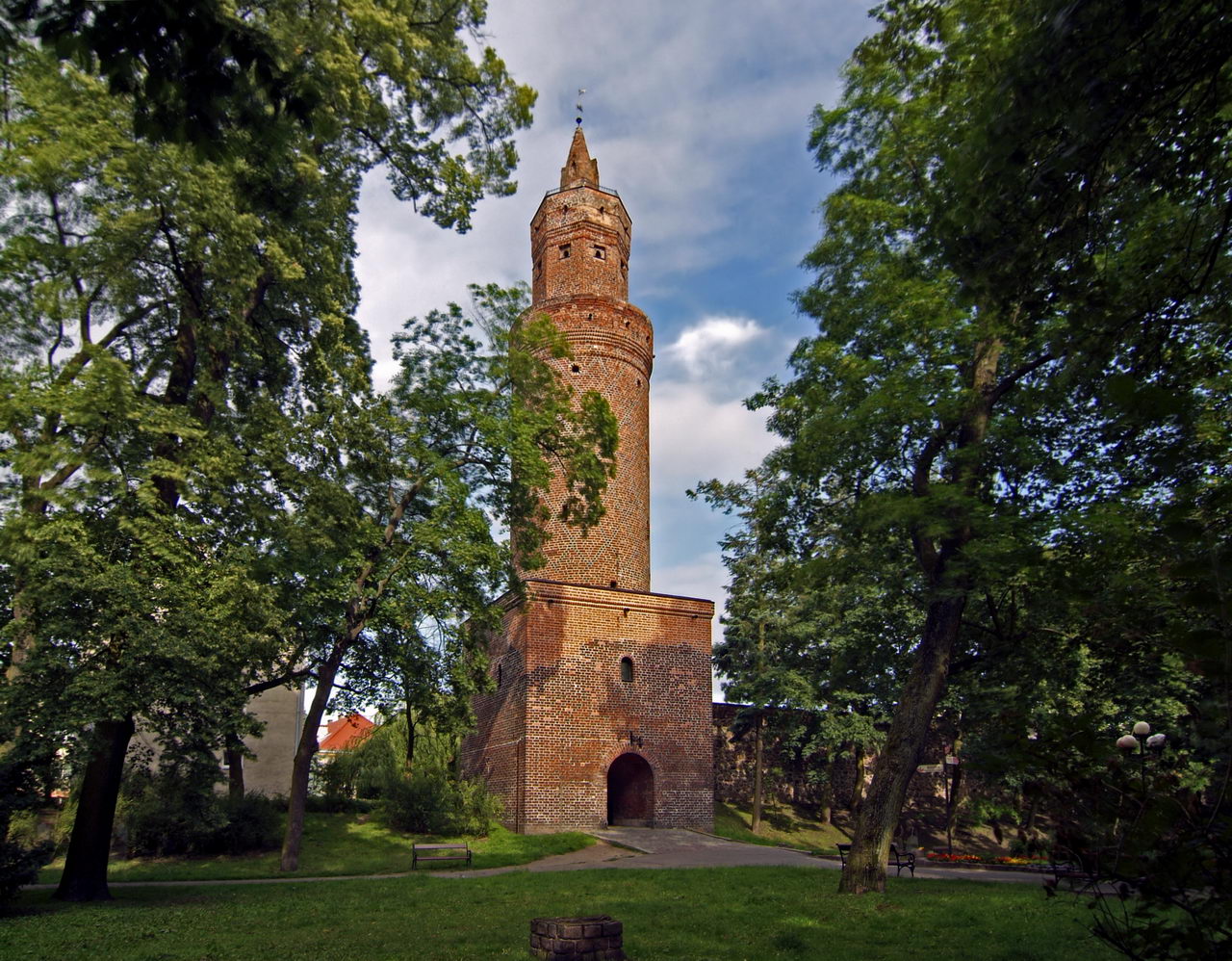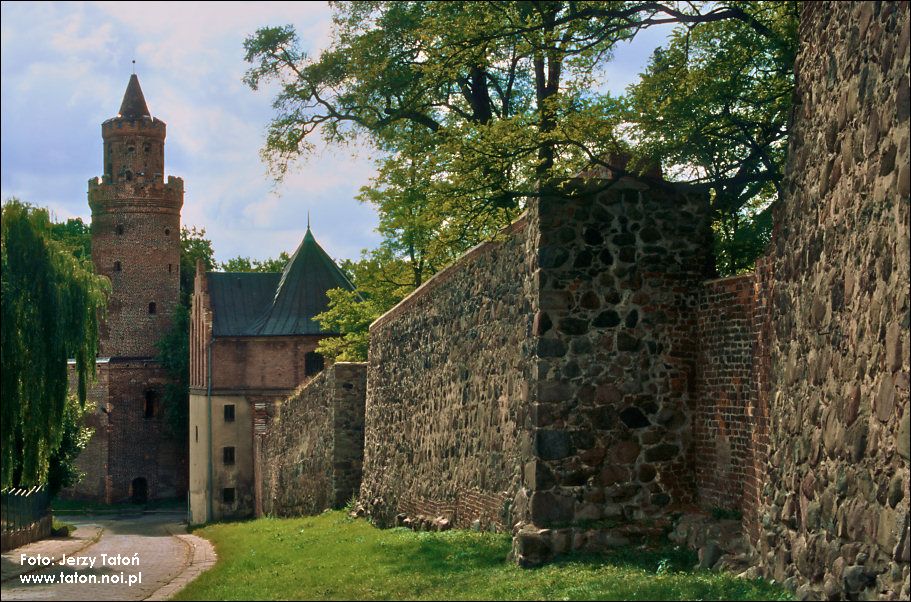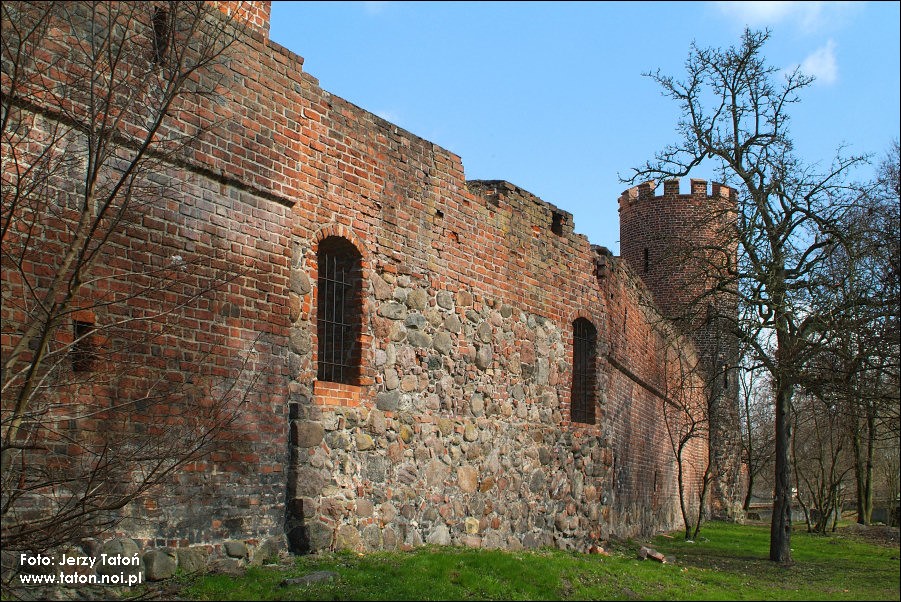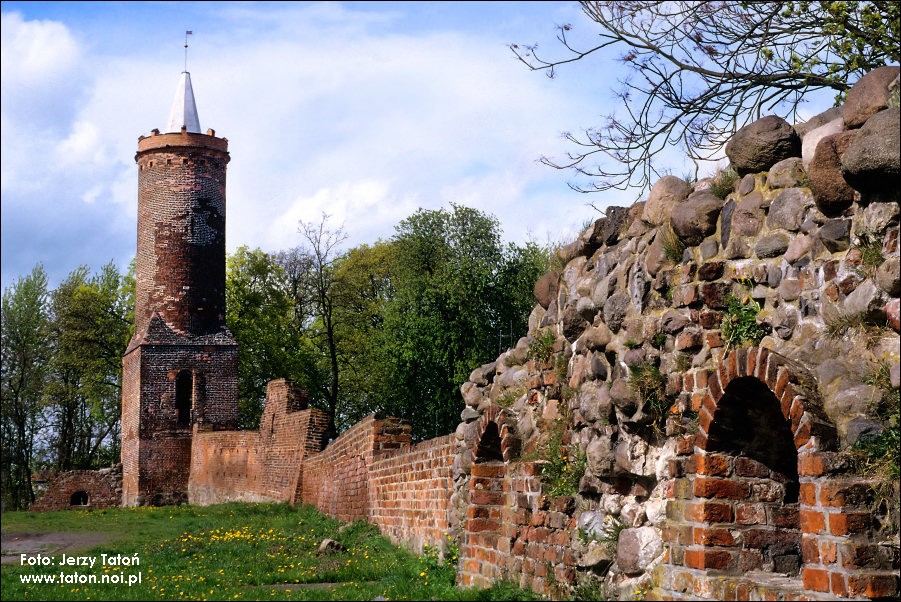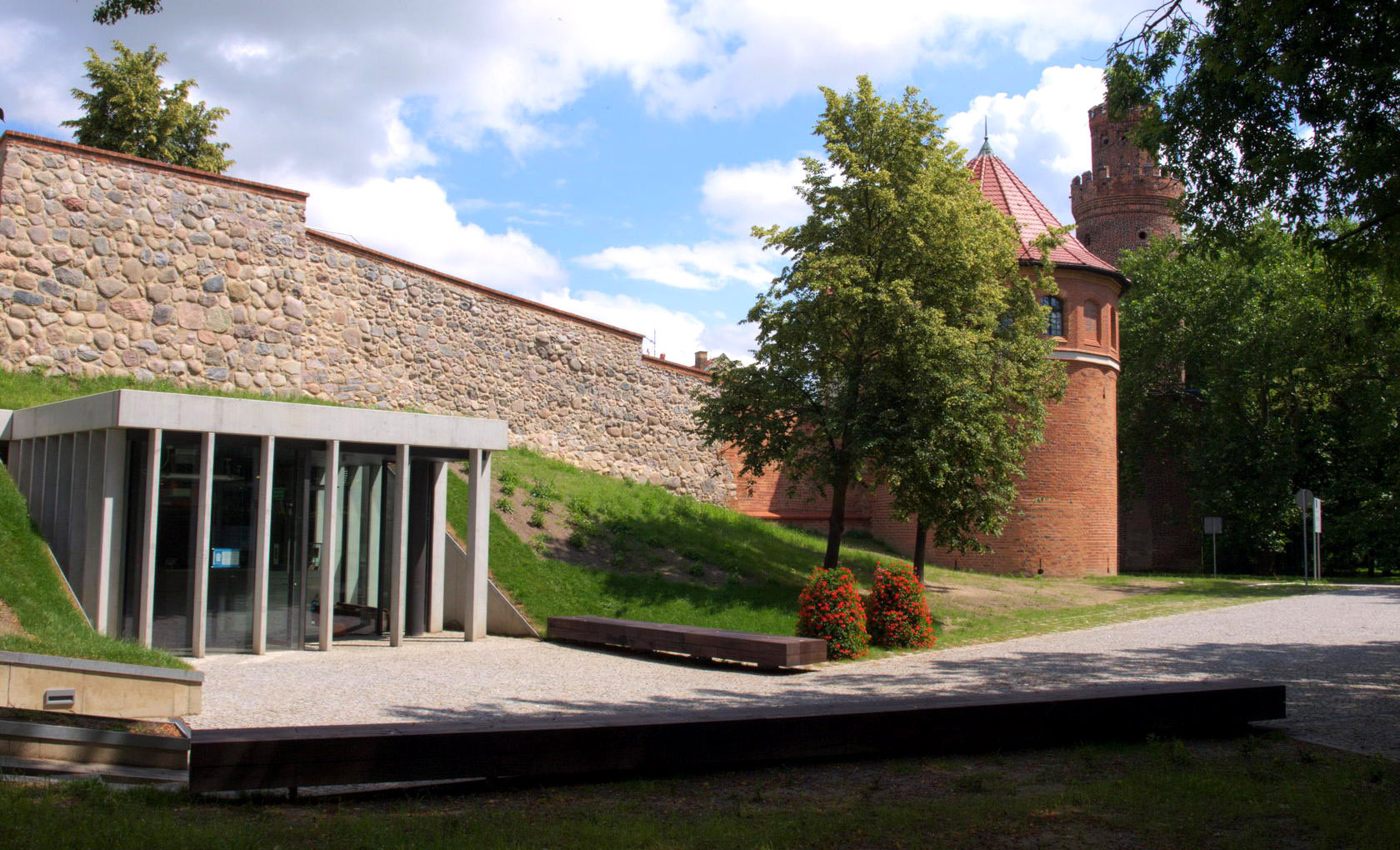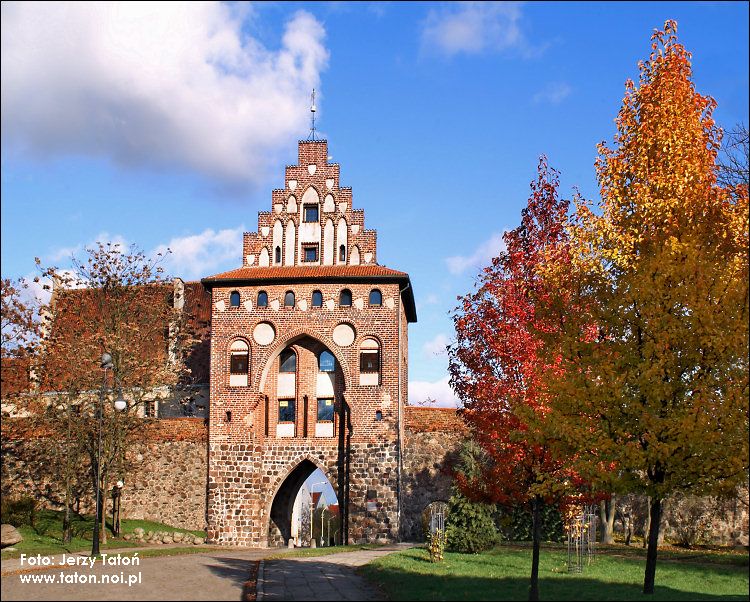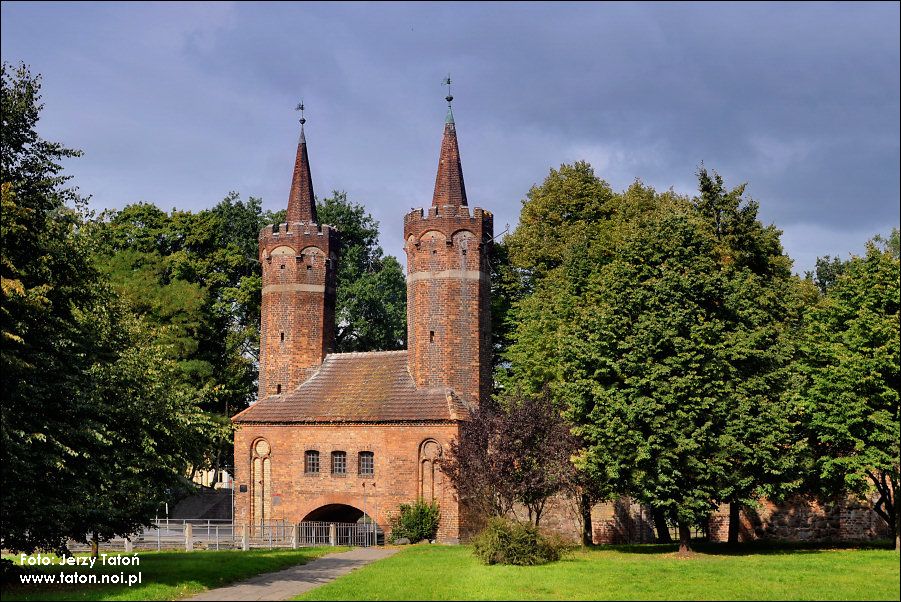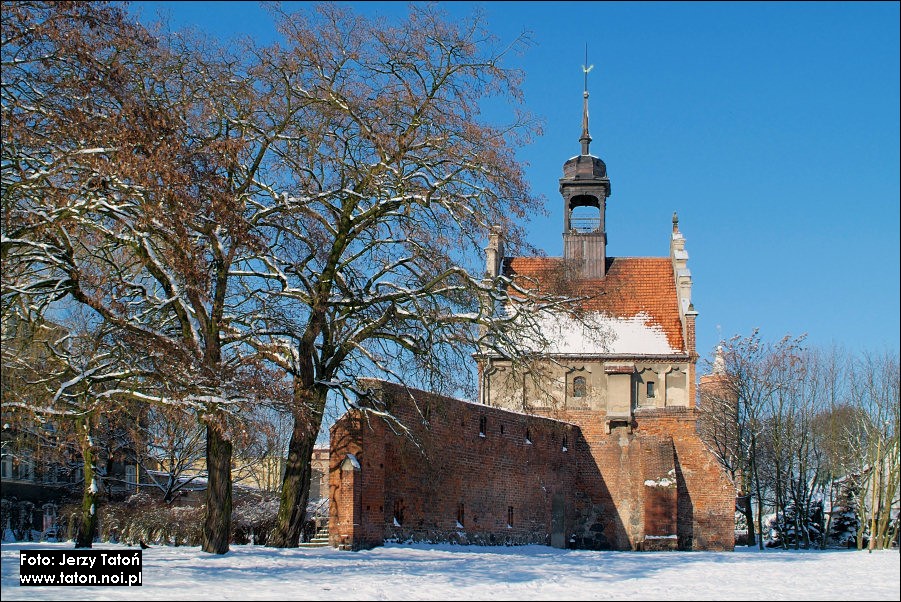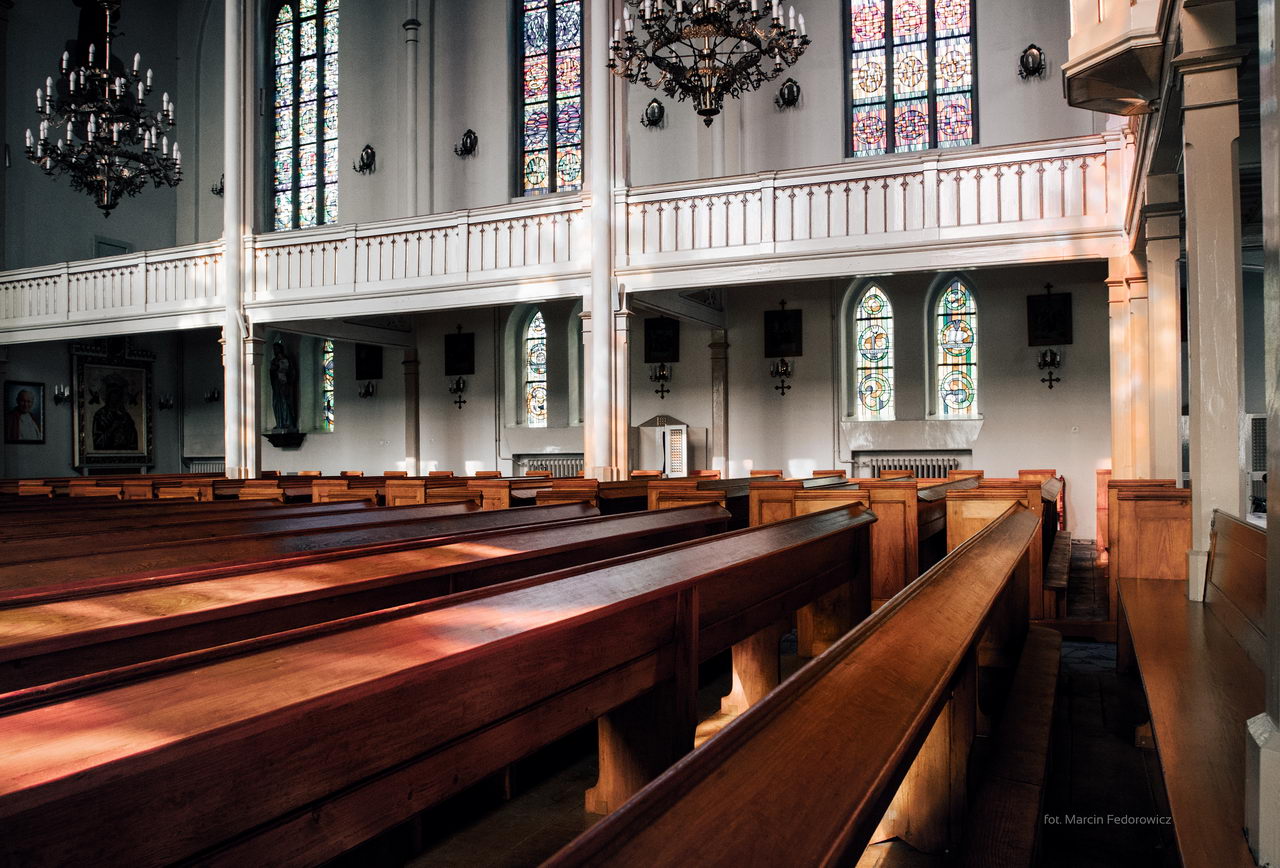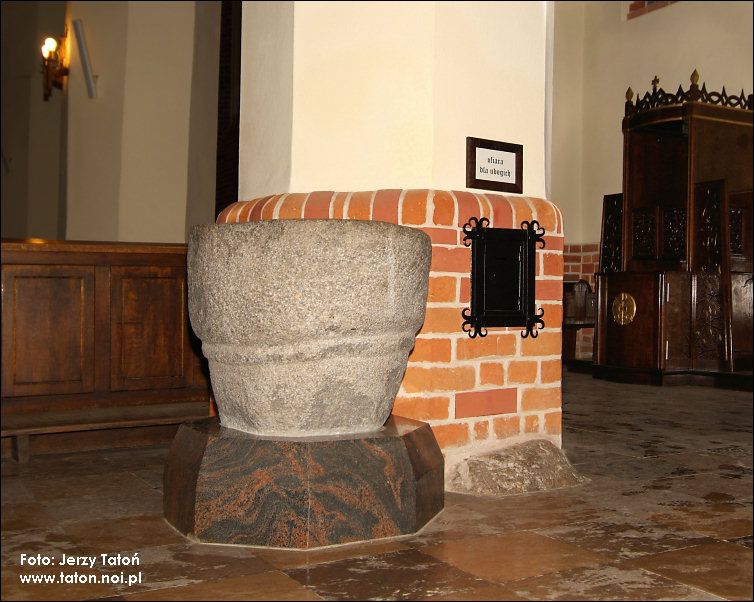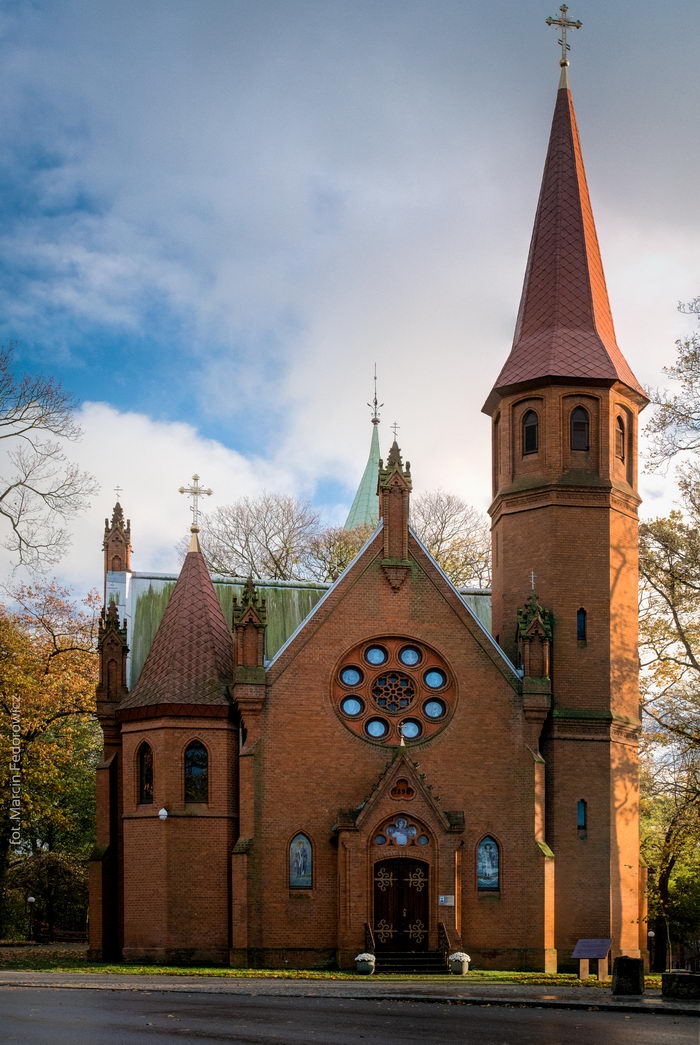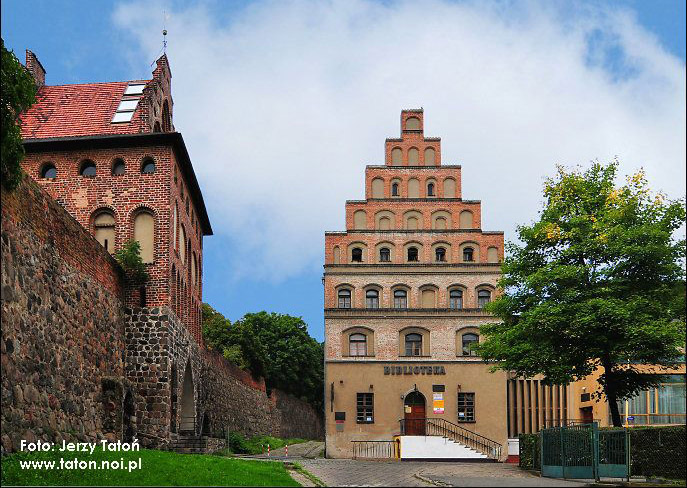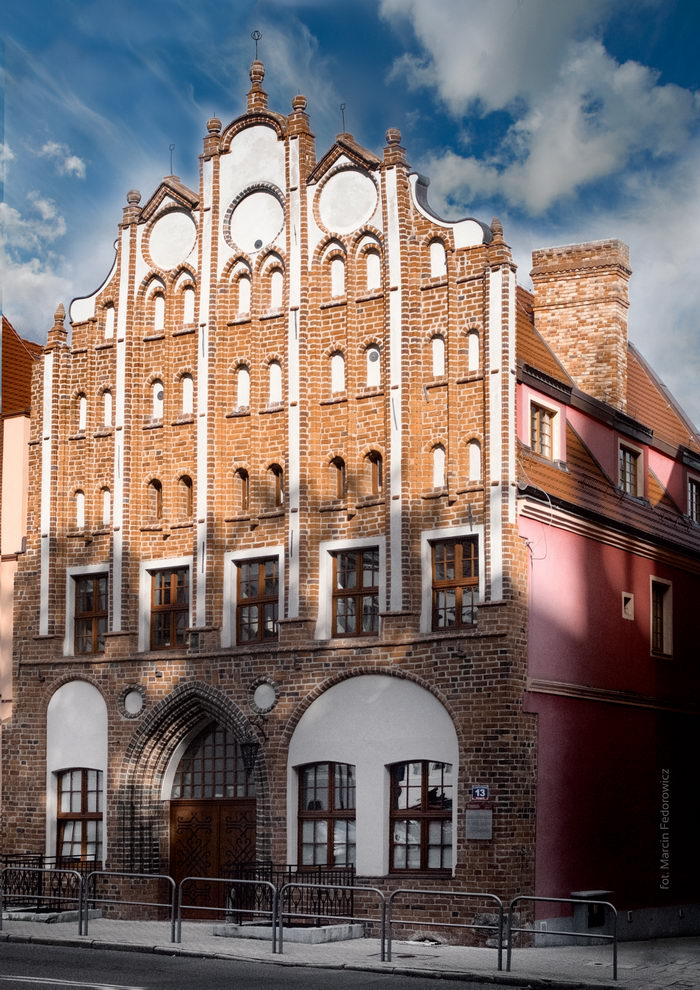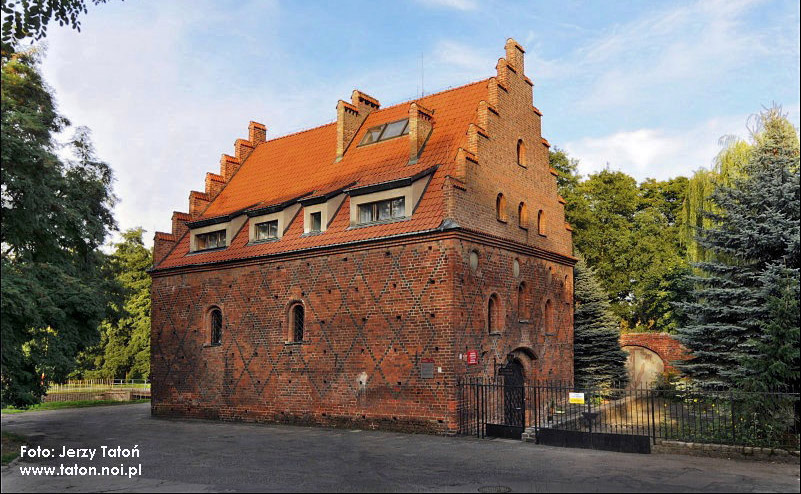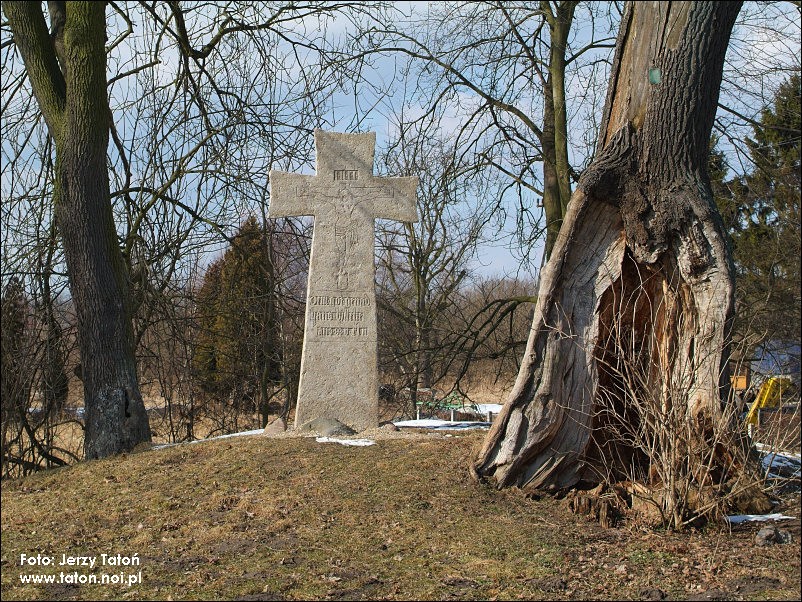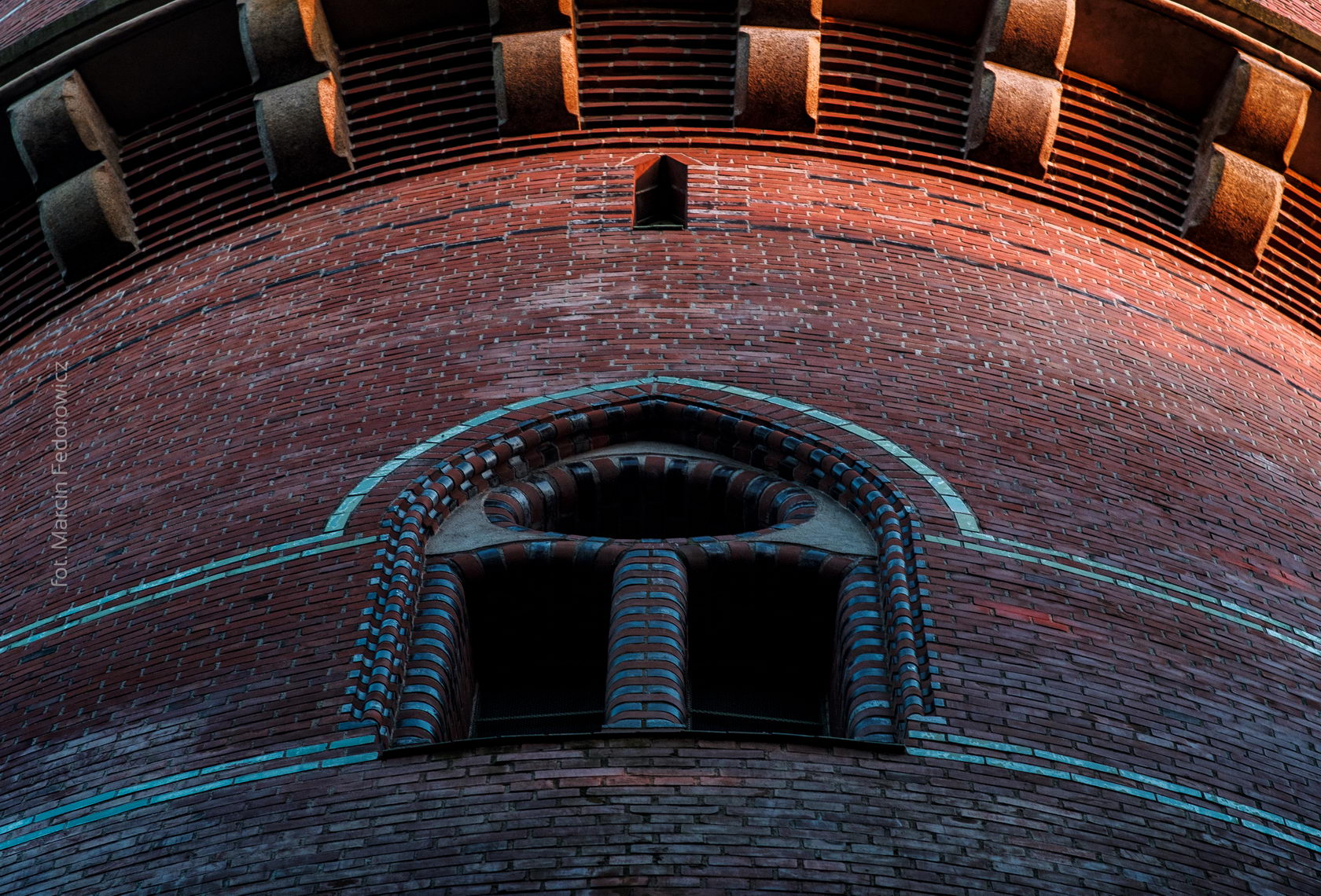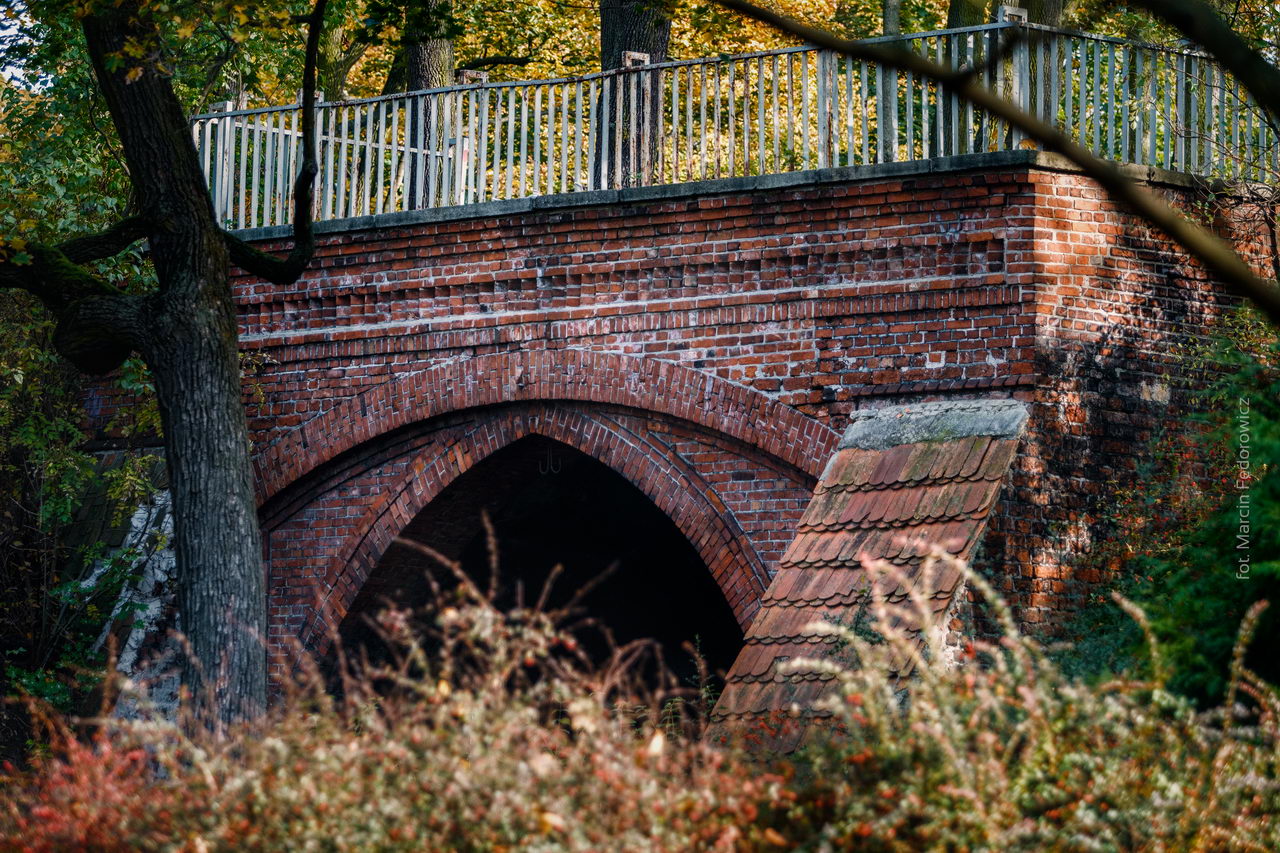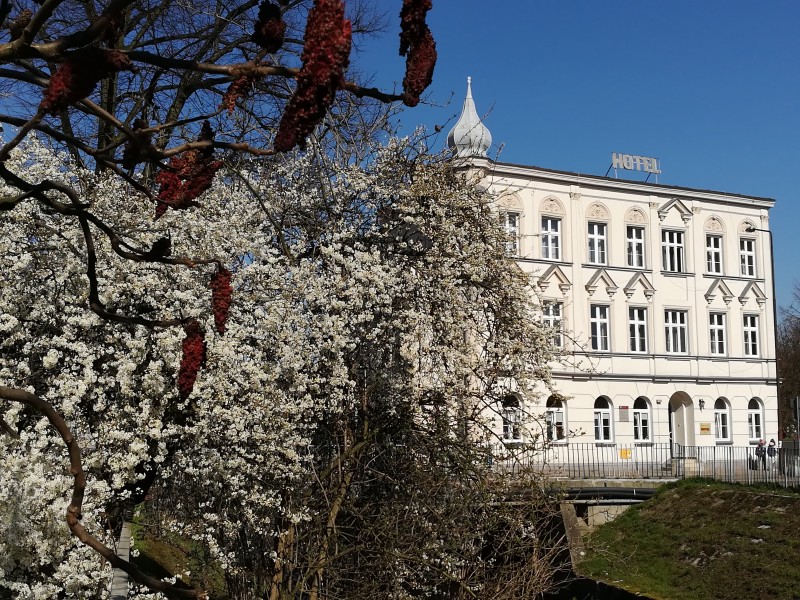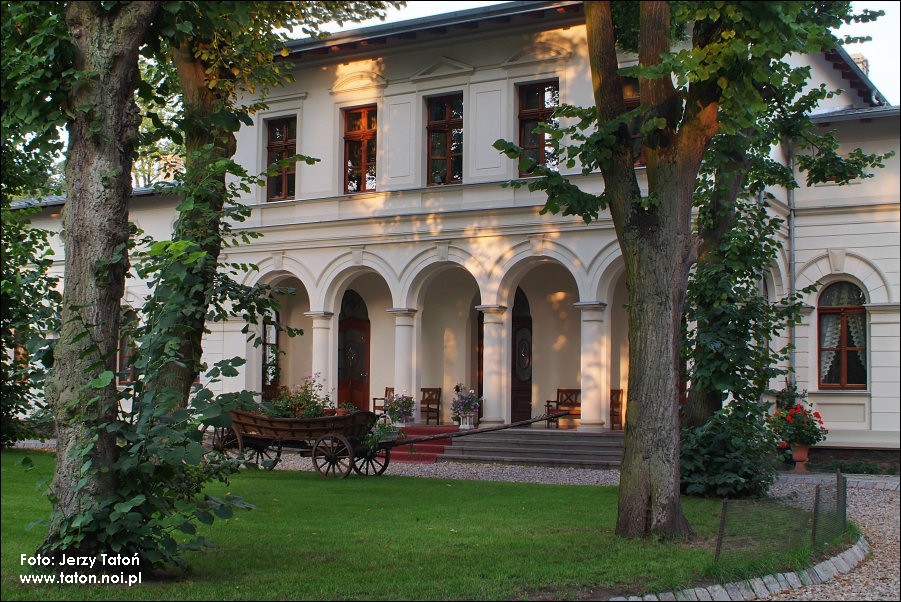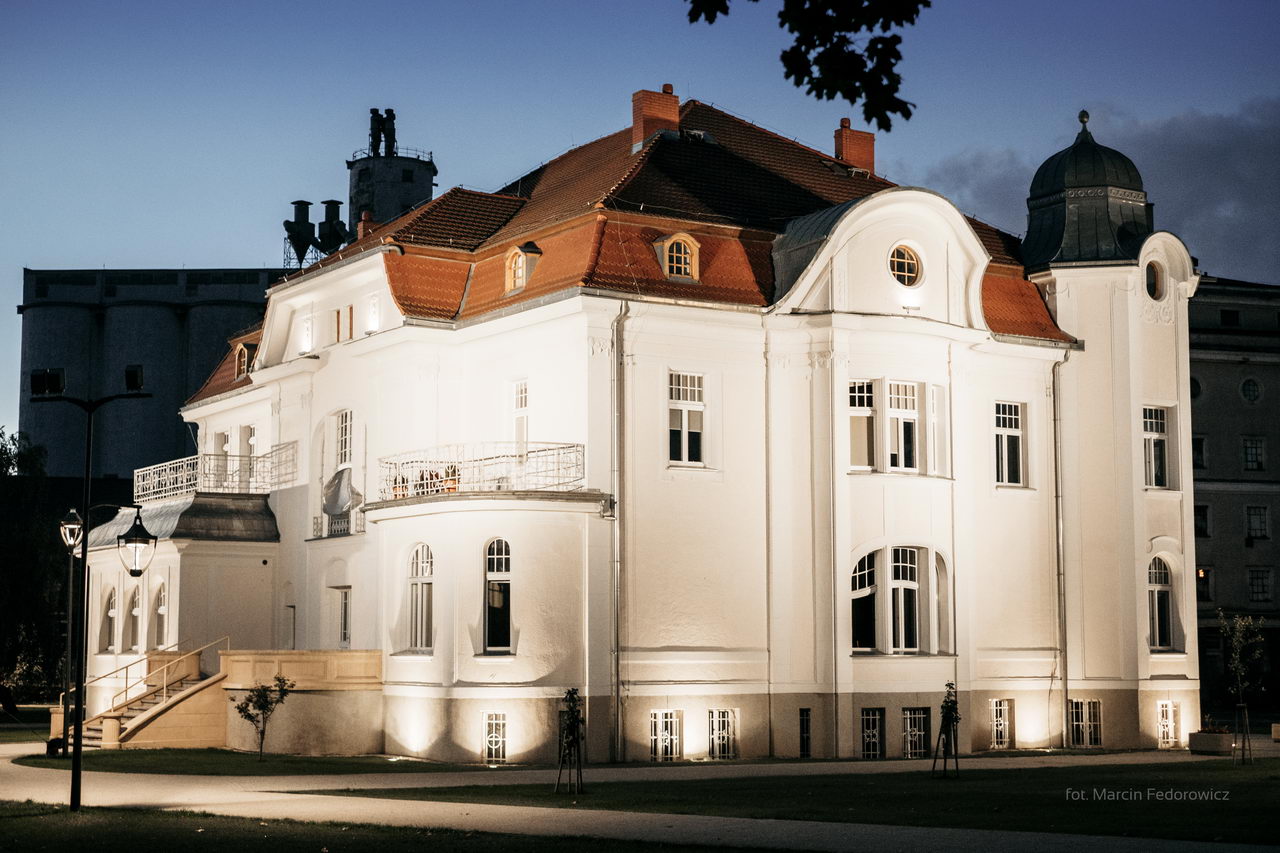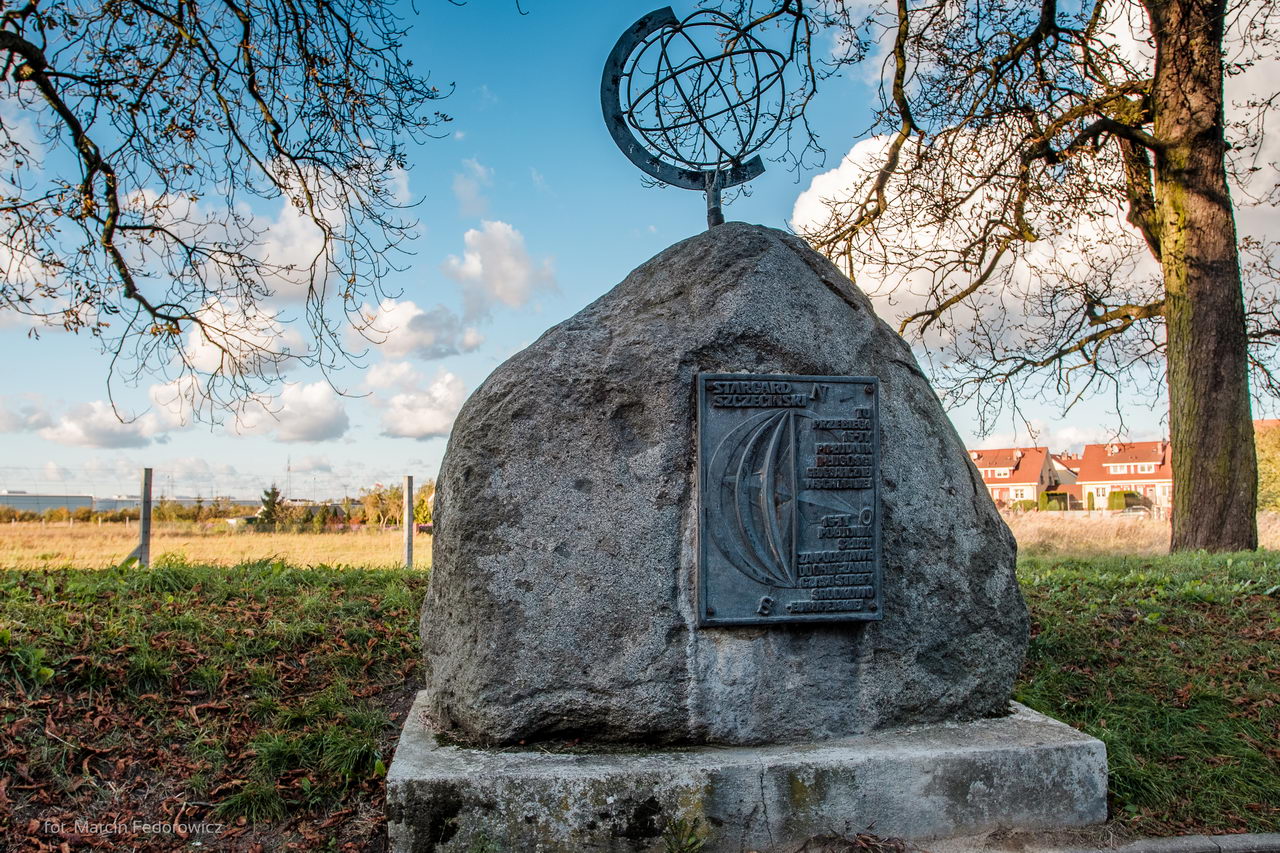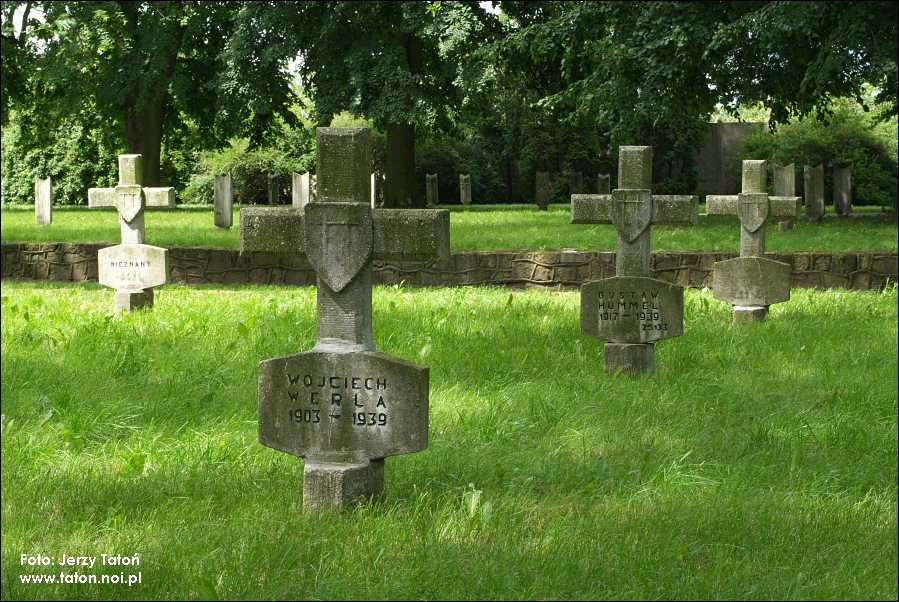CULTURAL TOUR
Monuments and Historic Buildings
The Old Town Square
The heart of a medieval city. It was marked out during the location of Stargard. It was surrounded by the most important buildings of the city and the houses of rich burghers. Until the end of XIX century, trade flourished and fairs were held on the main square and adjacent streets.
The Old Town Hall
The most splendid among such kind of Medieval objects throughout Pomerania was built in the 13th century. Originally served as a trading house (an indoor market) and later became a seat of municipal court and council. The Town Hall was rebuilt in the 14th century and its contemporary late Gothic style goes back to the second half of the 16th century. The western gable is adorned with intricate plate tracery. The great fire of 1635 destroyed both the Town Hall and the town archives. Rebuilt, it was destroyed again in 1945 to be rebuilt in 1957-1961. Today it is a seat of the Municipal Council.
Baroque Tenement Houses
Baroque Tenement Houses – the only ones in the market which were rebuilt after 1945. House No. 3 was built in the 17th century probably in place of New Exchange of about 1500, reconstructed after the fire in 1635. House No. 4 was built after 1635 on the grounds of the former church graveyard. Both houses were rebuilt in baroque style and currently are seat of the Archeological and Historical Museum and Tourist Information (in House No. 4)
Collegiate Church of Blessed Virgin Mary Queen of the World
Collegiate Church of Blessed Virgin Mary Queen of the World – The most valuable landmark of Western and Central Pomerania, and at the same time the most outstanding work of medieval architecture in Poland. Its construction started in 1292 and the current shape dates back to the turn of the 14th and 15th century. It is a double towered basilica with chancel surrounded by a ring of chapels. Its quality is enhanced by the intricate ceramic façade decoration, unique tower decor – the so called „Stargard style” blind arcade and the remarkable triforium passage in the choir. The church and adjoining city walls represent one of Poland’s official national Historic Monuments (Pomnik historii), as designated September 17, 2010. Its listing is maintained by the National Heritage Board of Poland.
City walls
The Red Sea Tower
The Weavers’ Tower (Ice Tower)
The Whitehead Tower
Basteja
Basteja – the round bastion, built in the 16th century in view of new idea of defense based on fire-arms. Used as a dwelling in the 19th century, destroyed in 1945 and reconstructed in years 1979-1980. Currently it houses the most modern museum in West Pomerania with the exhibition of the history of Stargard.
The Pyrzycka Gate
One of the most fabulous city gates in Pomerania. Erected in stages from the 13th to the 15th century, originally in the form of a tower. Reconstructed into a gabled gate in the middle of the 15th century. In the second half of the 15th century reinforced with a neck and a pre-gate, which burned down in 1666 and was finally demolished in 1790. The gate was turned into a residential building in the 18th century. It is a part of a unique system of defense walls in Stargard.
The Mill Gate
The Mill Gate – also referred to as the Water or Harbor Gate, built in the 15th century is Poland’s only town gate erected above the river-bed. Originally the two towers were connected by a wooden bridge. This was later replaced with a brick gatehouse with a crossing. The name derives from a mill located at the riverbank until the 18th century.
The Mill Gate was the town’s symbol for years being represented on seals as well as it was one of the elements of the old-time municipal emblem.
The Rampart Gate
The Rampart Gate – Its name refers to the ramparts around the castellan’s city existing before the construction of the city walls. The gate was constructed in stages from the 15th to the 17th century and connects elements of gothic and a renaissance style. On its southern wall one can see a latrine bay which is undoubtedly a little trivia for tourists.
St. John the Baptist’s Church
Kletzin’s House
Kletzin’s House (also known as Rohleder’s House) -It’s a sample of a late-Gothic Hanseatic merchant’s house from 15th / 16th century. In the basement there are still two rooms with the stellar and cross vaults. At the end of the 19th century the house was owned by the postmaster Rohleder, around 1922 by Rudolf Kletzin. Destroyed in 1945, reconstructed in years 1969 – 1973. Currently it is a seat of the Stargard’s Library.
Gothic Tenement House
Gothic Tenement House (also known as Protzen’s House or The Old House) – one of the most splendid late-Gothic buildings of that kind in Poland. It’s an example of a mixed-purpose building typical for Hanseatic town, with the ground floor including a tall entrance hall and upper floors used for dwelling and storage purposes. The House was erected in the second half of the 15th century. Its façade was decorated with the “Stargard style” blind arcade. It was destroyed in 1945 and reconstructed from 1951 to 1959. Currently the House is a seat of a music school.
The Armory
The Armory – constructed on the plan of a rectangle around 1500 as a place of production, repair and storage of a weaponry. In the 19th century, until 1875 was used as a criminal prison. Destroyed at the beginning of the 20th century and finally reconstructed in 1974 houses a branch of the State Archive in Szczecin.
Conciliation cross
„PTTK” (Polish Tourism Association) Hotel
A unique in form, three-level building from 1876. One of few buildings in the Old Town that survived the ravages of 1945. In the corner of 2nd floor there is a balcony with a view over a landscape of Ina canal. Before 1945 the building played a role of a tenement house occupied by two families. After War adapted to a hotel by Polish Tourism Association.
International War Cemetery
– It is located far from the city center, next to the Reymonta street. The cemetery was founded during the Great War. Like all necropolis, it makes one think about the passing of time, about the fate of those who died far from their homes. Muslims, Catholics of both rites, Protestants, Jews – soldiers of two world wars – prisoners of war – Belgians, Frenchmen, Dutch, Poles, Portuguese, Romanians, Serbs, Italians, as well as soldiers of the Tsar army and the Red Army rest at the International War Cemetery. There are seven monuments in the cemetery: three from the times of the Great War, one from the World War II and three erected post-war. Among the latter is a monument (and tombstones) moved here from Freedom Platz, formerly part of the Soviet Soldiers Mausoleum.


